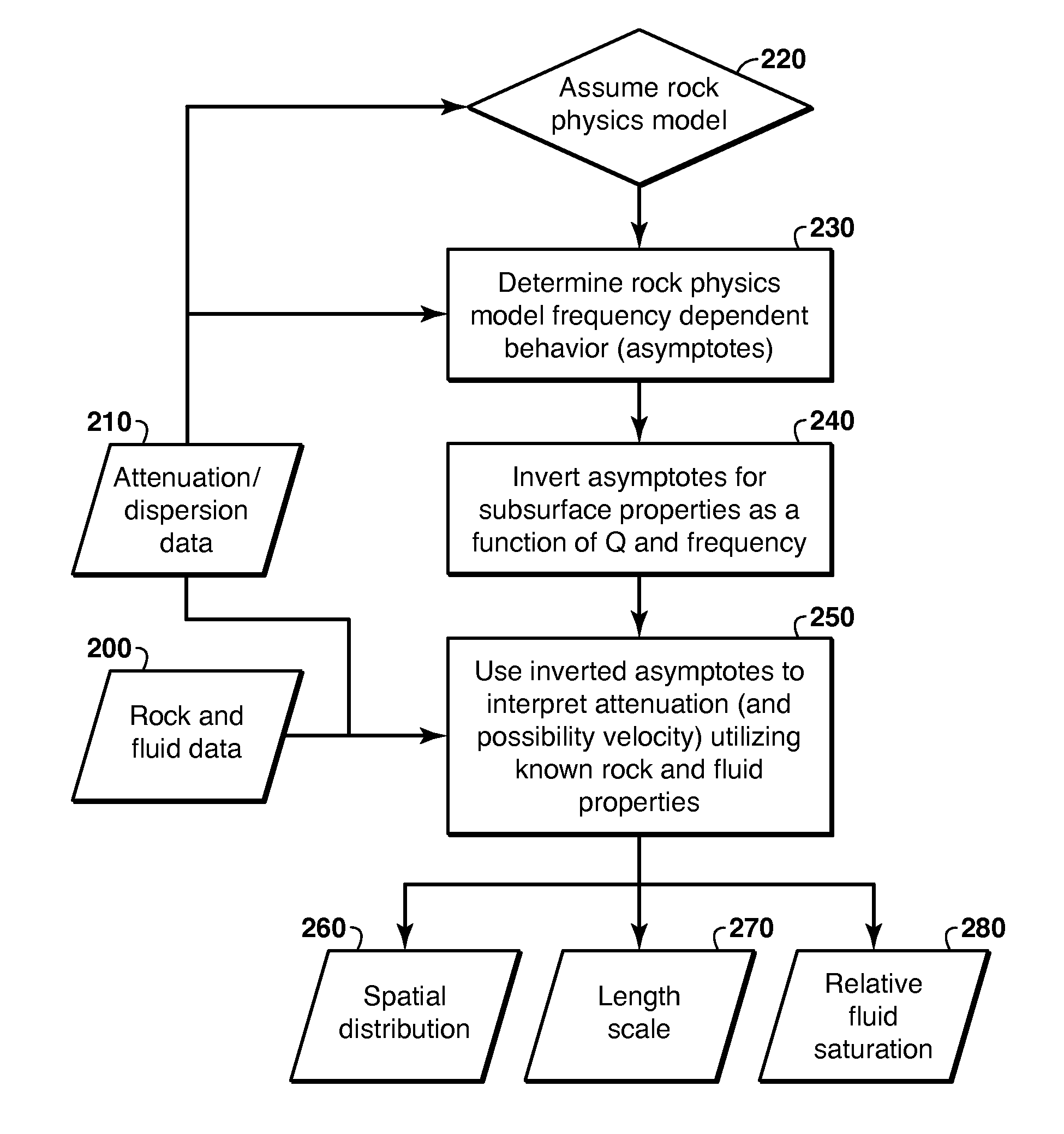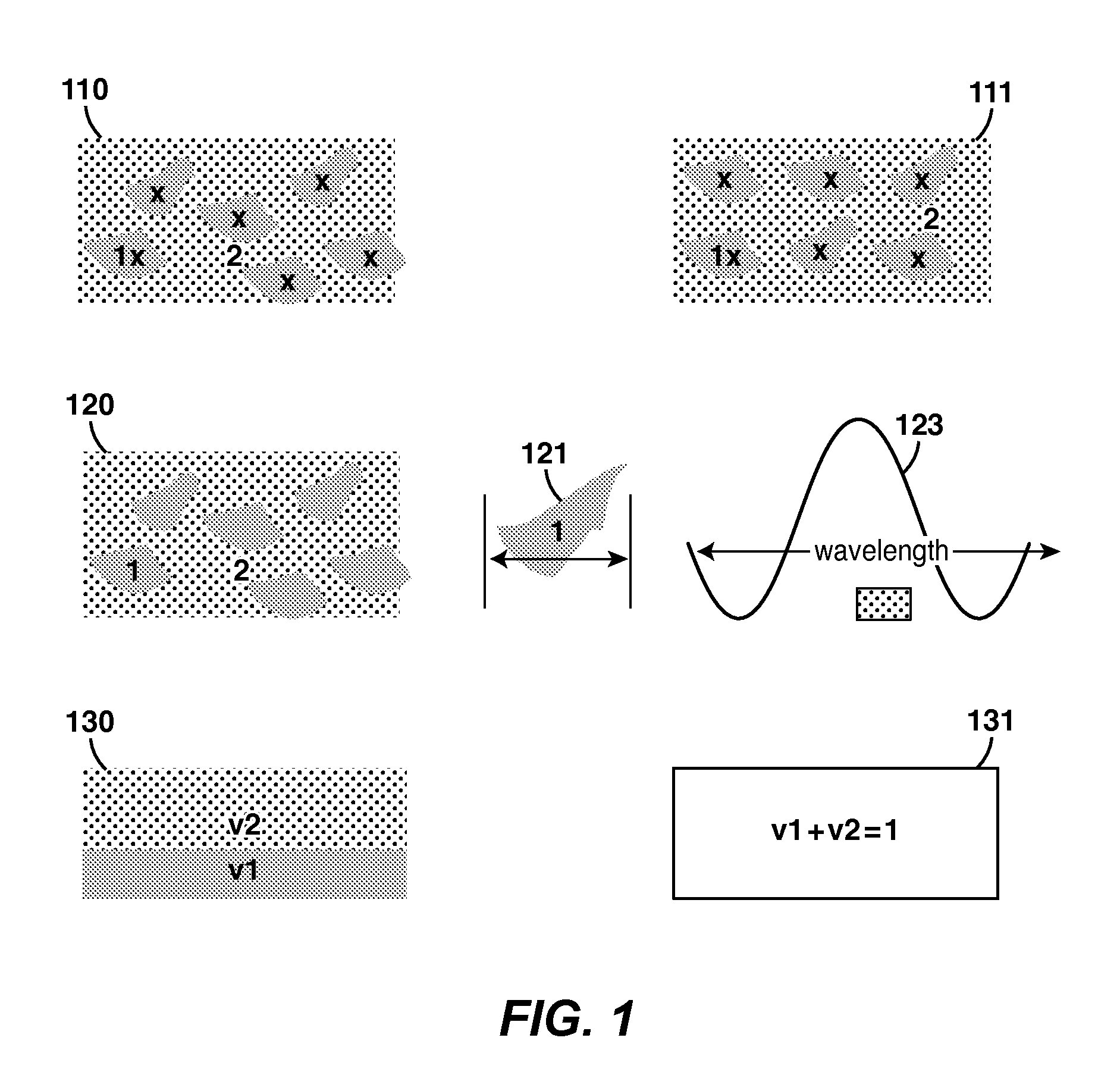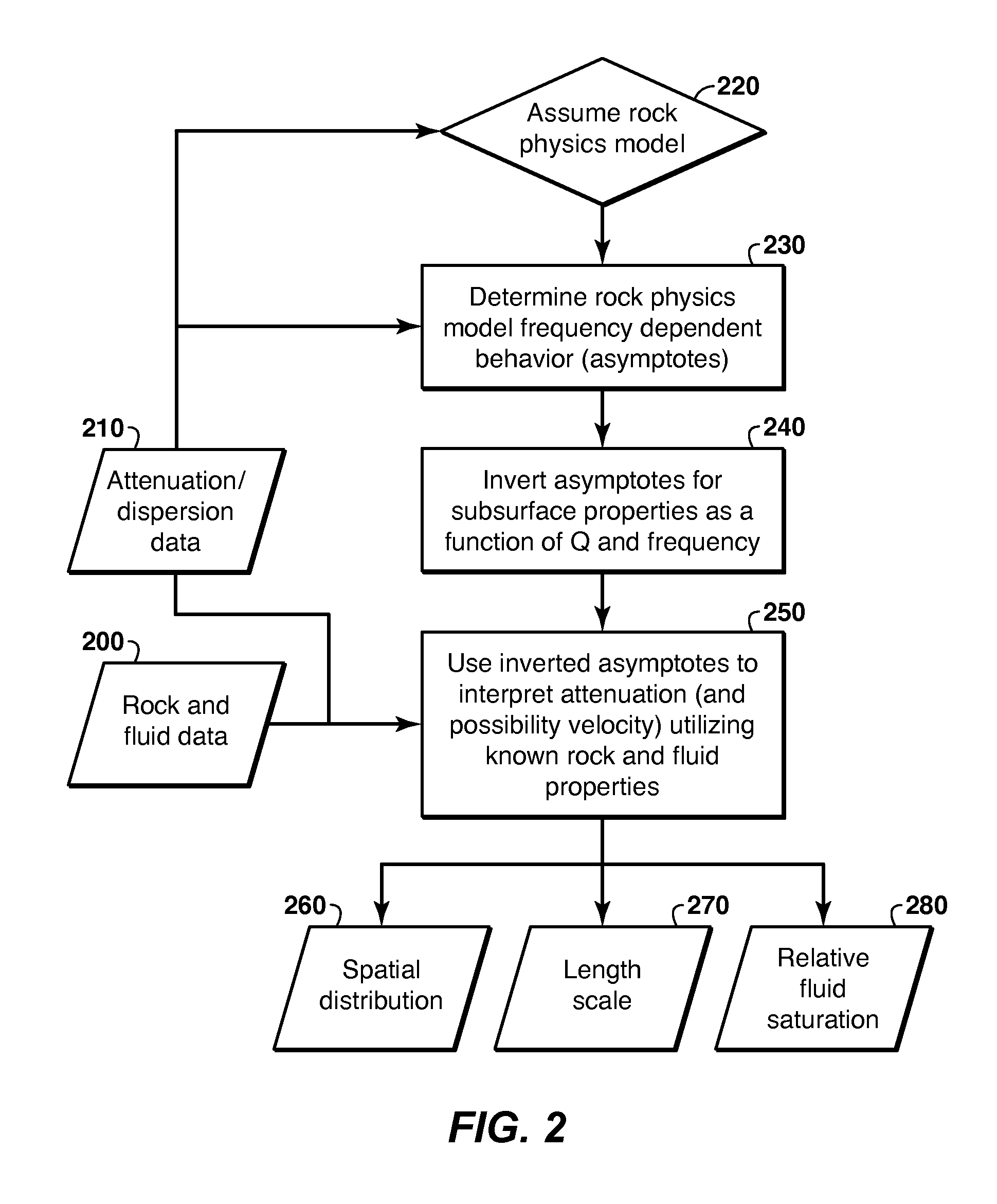Estimation of Production Sweep Efficiency Utilizing Geophysical Data
- Summary
- Abstract
- Description
- Claims
- Application Information
AI Technical Summary
Benefits of technology
Problems solved by technology
Method used
Image
Examples
example 1
Where is the Peak Frequency of Attenuation
[0069]In this example, P-wave velocity dispersion and attenuation are modeled assuming a periodic distribution of light oil and water with a porosity 22%. The Biot coefficient of the rock is 0.824 (see definition below). Two different cases are examined. In FIGS. 3A-3C and 4A-4C, the characteristic length scale of the spatial distribution of fluid is fixed at 40 cm, while rock permeability is altered from 1 Darcy to 10 milli-Darcy. In FIGS. 5A-5C and 6A-6C, the characteristic length scale of the fluid distribution is altered from 4 m to 4 cm, while rock permeability is fixed at 1 Darcy. The attenuation curves (e.g., 430 in FIGS. 4A-4C) are plotted in logarithmic inverse Q to demonstrate the frequency dependence of attenuation. Other representations of Q with respect to log frequency, such as Q or inverse Q do not reveal the exact frequency dependence of the attenuation. Similarly, the velocity dispersion curves (e.g. 330 in FIGS. 3A-3C) are ...
example 2
What is the Magnitude of Attenuation at the Peak Frequency
[0077]In this example the magnitude of attenuation is analyzed as a function of rock frame stiffness and fluid bulk moduli contrast. Both factors significantly impact the magnitude of attenuation across the entire frequency bandwidth. Specifically, the magnitude of attenuation at the peak frequency will be examined. This represents the maximum attenuation that can arise for a specific combination (and concentration) of pore fluids within a rock of certain elastic stiffness. Here the rock frame stiffness is parameterized in terms of the Biot coefficient αR, which is a measure of bulk macroscopic compressibility of a volume of dry rock relative to the compressibility of its constituent materials. The Biot coefficient is defined as
αR=1-KdKg,
where Kd is the bulk modulus of the dry rock and Kg is the bulk modulus of the grain material. When αR→0.5, the rock is stiff and the acoustic response (attenuation, velocity) of a partially ...
example 3
The Influence of Spatial Distribution on Frequency Dependent Attenuation
[0080]FIGS. 10A-B demonstrate the effect of different spatial distributions on the frequency dependent characteristics of attenuation (10A) and velocity dispersion (10B). While only random and periodic layering of fluid heterogeneities were modeled, the effect of having different spatial distributions is well documented in the literature; see for example Mueller et al. 2008. The impact is that attenuation will increase or decrease more quickly for some fluid distribution patterns than others.
[0081]In FIGS. 10 A-B, attenuation and velocity dispersion is estimated using the Mueller and Gurevich (2004) rock physics model by assuming two different spatial distributions of fluids. Here 1050 and 1051 refer to attenuation and velocity dispersion estimated assuming a random distribution of heterogeneous layers. Here 1060 and 1061 refer to attenuation and velocity dispersion estimated using a periodic distribution of het...
PUM
 Login to View More
Login to View More Abstract
Description
Claims
Application Information
 Login to View More
Login to View More - R&D
- Intellectual Property
- Life Sciences
- Materials
- Tech Scout
- Unparalleled Data Quality
- Higher Quality Content
- 60% Fewer Hallucinations
Browse by: Latest US Patents, China's latest patents, Technical Efficacy Thesaurus, Application Domain, Technology Topic, Popular Technical Reports.
© 2025 PatSnap. All rights reserved.Legal|Privacy policy|Modern Slavery Act Transparency Statement|Sitemap|About US| Contact US: help@patsnap.com



